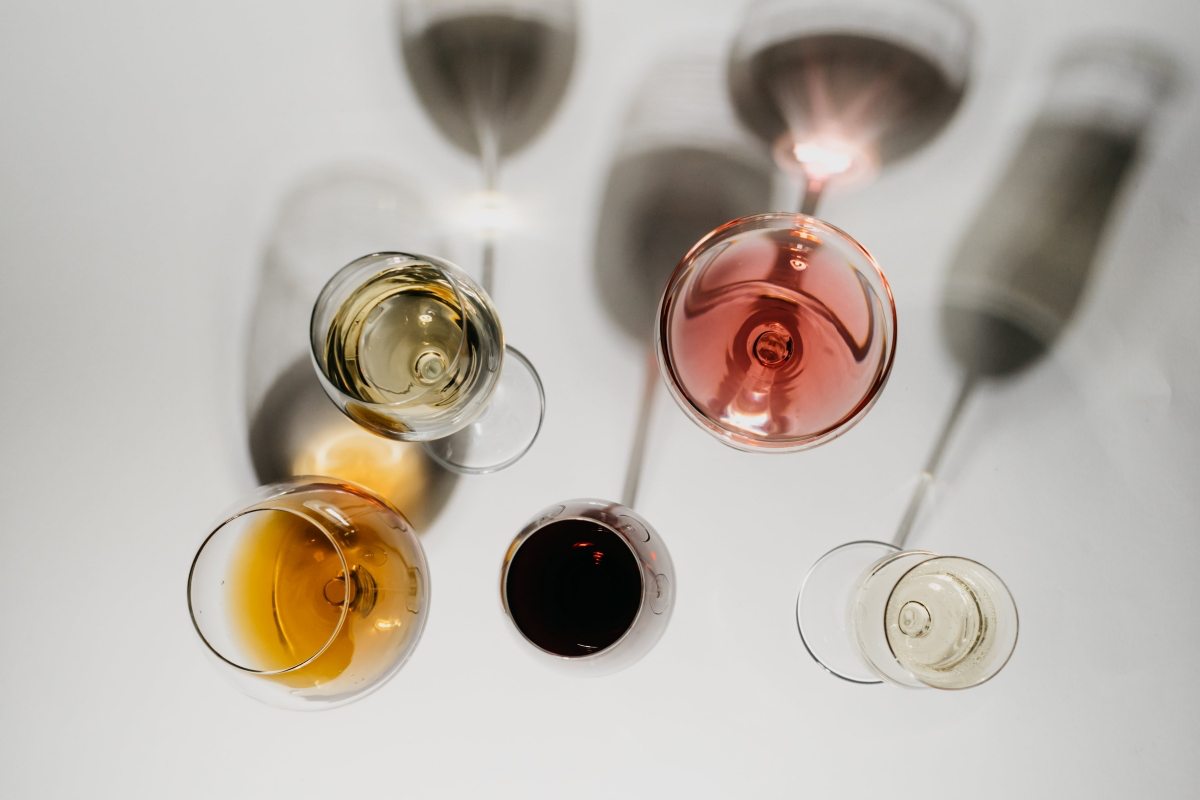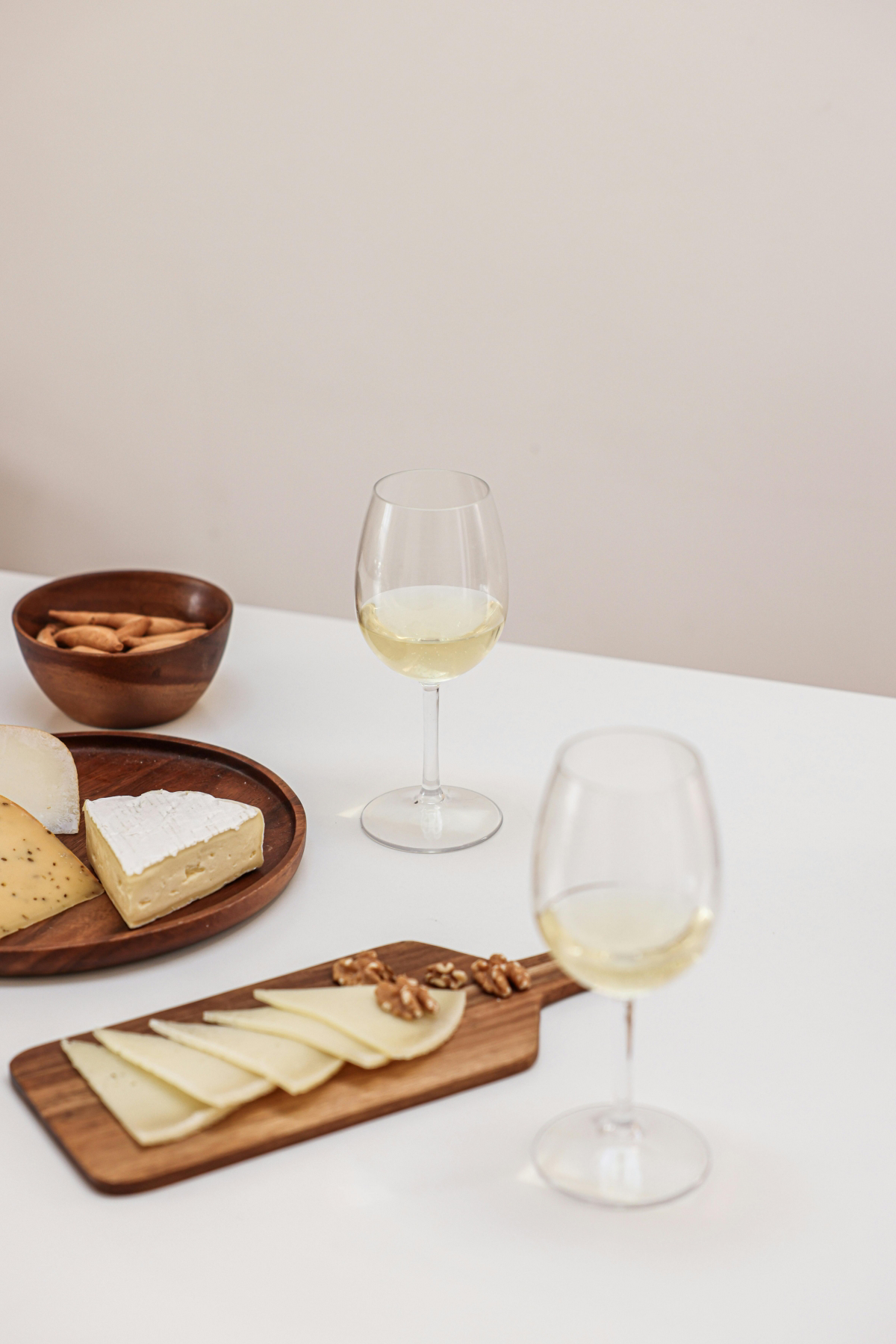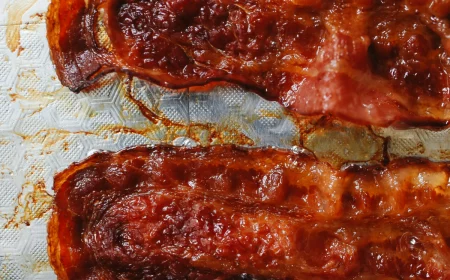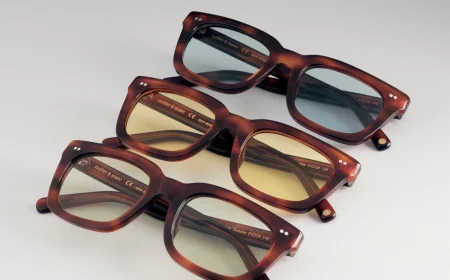White Wine 101: A Guide to Varieties, Food Pairings & More
White wine, with its crisp and refreshing character, has enchanted wine lovers for centuries. Whether you’re a seasoned oenophile or just dipping your toes into the world of wine, there’s something undeniably captivating about a well-chilled glass of white. In this exploration, we’ll delve into the intriguing universe of white wine, uncovering its types, costs, ideal enthusiasts, and culinary companions. So, grab your corkscrew and a glass; it’s time to embark on a vinous journey.
Time to indulge in the world of white wine with our comprehensive guide
In this article
- What is White Wine?
- Types of White Wine
- How Much Does White Wine Usually Cost?
- Who Should Drink White Wine?
- Who Should Avoid It and Why?
- The Difference Between White Wine, Red Wine, and Rosé
- Advantages and Disadvantages of White Wine
- Best Foods to Combine with White Wine
- Worst Foods to Eat with White Wine
- List of Foods to Pair with White Wine
- Foods to Avoid with White Wine
- Conclusion
- More Articles You Might Like
What is White Wine?
White wine, simply put, is wine made from white or green grapes. The juice extracted from these grapes is fermented without the grape skins, which differentiates it from red wine and contributes to its pale, golden hue. However, the world of white wine is far from monochromatic. It boasts a diverse spectrum of flavors, aromas, and styles, ranging from the bone-dry to the lusciously sweet.
White wine is fermented without the grape skins, unlike red wine
Types of White Wine
White wine’s versatility is manifested in its myriad of grape varieties and production methods. Here are some of the most beloved types:
- Chardonnay: Known for its buttery and oaky notes, Chardonnay is a crowd-pleaser with a wide range of styles, from lean and mineral-driven to full-bodied and opulent.
- Sauvignon Blanc: Crisp, zesty, and often herbaceous, Sauvignon Blanc offers flavors of green apple, citrus, and grass, making it a popular choice for warm weather.
- Riesling: This versatile grape can produce anything from bone-dry to syrupy sweet wines. Expect vibrant acidity and notes of apple, peach, and honey.
- Pinot Grigio/Pinot Gris: Light and refreshing, Pinot Grigio (or Pinot Gris) presents flavors of pear, melon, and citrus, making it an ideal aperitif.
- Viognier: Aromatic and luscious, Viognier wines offer scents of apricot, honeysuckle, and tropical fruits.
- Chenin Blanc: From dry to dessert styles, Chenin Blanc wines offer a versatile array of flavors, including green apple, honey, and quince.
- Gewürztraminer: This aromatic grape delivers floral and spicy notes, often accompanied by lychee, rose, and ginger.
These are the most beloved variations that you can sip on
How Much Does White Wine Usually Cost?
The price range of white wine is impressively broad, catering to both frugal sippers and those seeking luxurious indulgence. You can find excellent white wines for as little as $10 to $15 per bottle. These budget-friendly options are perfect for everyday enjoyment, offering delightful flavors without straining your wallet. On the other end of the spectrum, rare and prestigious white wines can command hundreds or even thousands of dollars per bottle. These are often aged to perfection, showcasing unparalleled complexity and elegance. However, it’s important to note that you don’t need to splurge to savor exceptional white wines.
You can find excellent white wines for as little as $10 to $15 per bottle
Who Should Drink White Wine?
White wine is a welcoming libation, extending an invitation to a diverse range of wine enthusiasts:
- Newcomers to Wine: Its approachable and versatile nature makes white wine an excellent starting point for those new to the world of wine. Its wide array of flavors and styles provides ample opportunities for exploration.
- Warm-Weather Enthusiasts: Crisp and refreshing, white wine is a cooling companion on a sunny day, making it a top choice for warm-weather sipping.
- Food Enthusiasts: White wine’s acidity and flavor profiles harmonize beautifully with a variety of dishes, making it a favorite among foodies.
- Celebrators of Diversity: With its extensive range of grape varieties and styles, white wine offers an exciting journey through the world of wine diversity.
White wine is a top choice for warm-weather sipping
Who Should Avoid It and Why?
While white wine is a versatile and delightful beverage, there are situations where it might not be the ideal choice:
- Individuals with Sulfite Sensitivity: White wine can contain sulfites, which may trigger allergic reactions in some individuals. It’s advisable to choose wines with lower sulfite levels or explore sulfite-free options.
- Those Seeking Robust Red Wines: If you’re drawn to bold, tannic red wines, the subtler nature of white wine might not satisfy your palate.
- Extreme Sweetness Aversion: While many white wines are dry or off-dry, some can be quite sweet. If you have an aversion to sweet flavors, be mindful of your wine selection.
The subtler nature of white wine might not satisfy your palate
The Difference Between White Wine, Red Wine, and Rosé
White wine stands apart from its red and rosé counterparts primarily due to the absence of grape skin contact during fermentation. This key difference results in several distinctions:
- Color: White wine is, unsurprisingly, white or golden. Red wine, on the other hand, derives its rich hue from the prolonged contact between the grape skins and the juice, while rosé is somewhere in between, achieving its pink or blush color from limited skin contact.
- Flavor Profile: White wine often offers bright acidity and flavors of green apple, citrus, and tropical fruits. Red wine encompasses a spectrum of flavors, from dark berries and cherries to earthy notes and spices. Rosé typically showcases red fruit flavors like strawberries and raspberries.
- Aging Potential: Red wines are often suitable for extended aging due to their tannins and structure, while white wines are generally best enjoyed within a few years of release. Rosé is typically intended for youthful consumption.
White wine often offers bright acidity and flavors of green apple, citrus, and tropical fruits
Advantages and Disadvantages of White Wine
Advantages
- Versatility Beyond Compare: White wine’s diverse range of flavors and styles makes it a versatile companion for various occasions and dishes. Whether you’re enjoying a leisurely picnic in the park or indulging in a lavish seafood feast, there’s a white wine that can elevate your experience. Its chameleon-like ability to adapt to different flavor profiles makes it a go-to choice for culinary exploration.
- A Refreshing Respite: Imagine a scorching summer day, and you’re yearning for a beverage that can quench your thirst and invigorate your senses. White wine, with its crisp and refreshing qualities, emerges as an oasis of delight. Its cool, rejuvenating character is like a gentle breeze on a sweltering afternoon, offering respite and reviving your spirits. Whether you’re sipping it on a sun-drenched patio or pairing it with a light salad, white wine’s refreshing allure is undeniable.
- Food Pairing Harmony: One of the most captivating aspects of white wine lies in its impeccable ability to complement a wide array of foods. Its acidity and fruit-forward nature provide the ideal backdrop for culinary exploration. From delicate seafood dishes adorned with a squeeze of lemon to vibrant salads bursting with garden-fresh flavors, white wine effortlessly finds common ground with a plethora of ingredients. It dances in harmony with poultry, dances with cream sauces, and serenades your palate with every bite. The world of gastronomy is your oyster, and white wine is your accompanist, enhancing the symphony of flavors on your plate.
White wine has the impeccable ability to complement a wide array of foods
Disadvantages
- The Sensitive Side of White Wine: As enchanting as white wine may be, it harbors a potential drawback for some individuals – sulfites. Sulfites are compounds that occur naturally in the winemaking process, and they are also added to many wines as a preservative. While most people can enjoy sulfite-containing wines without issue, some individuals may experience sensitivities or allergies to these compounds. Common reactions include headaches, congestion, or skin rashes. To minimize this concern, it’s advisable to opt for wines with lower sulfite levels or explore sulfite-free wine options. Ensuring proper wine storage in a cool, dark place can also mitigate sulfite-related issues.
- Shorter Aging Potential: White wines typically have a shorter aging potential compared to their robust red counterparts. The inherent chemistry of white wine, characterized by lower tannin levels and greater acidity, makes it more susceptible to oxidation and flavor degradation over time. While there are exceptions, such as certain premium white wines like aged Chardonnay or Riesling, most white wines are best enjoyed within a few years of their vintage. This limited aging capacity means that the investment potential of white wine is generally lower than that of red wine, which can mature gracefully for decades. Therefore, if you’re seeking a wine to lay down for extended cellaring and anticipation, red wines may be a more suitable choice.
Some individuals may experience sensitivities or allergies to sulfites
Best Foods to Combine with White Wine
Pairing food with white wine is akin to orchestrating a symphony of flavors that dance across your palate. Here are some classic combinations to tantalize your taste buds:
- Chardonnay with Buttered Lobster: The rich, buttery notes of a well-oaked Chardonnay harmonize beautifully with the succulent, sweet flavors of lobster. Whether you’re indulging in a lobster tail or a luscious lobster bisque, Chardonnay’s opulent character elevates this seafood delicacy to new heights of gastronomic delight.
- Sauvignon Blanc with Goat Cheese Salad: Picture a crisp, verdant salad adorned with creamy goat cheese. Now, imagine each bite bursting with flavor and freshness. This is the magic that happens when you pair Sauvignon Blanc with a goat cheese salad. The wine’s zesty acidity cuts through the creaminess of the goat cheese.
- Riesling with Spicy Thai Cuisine: Riesling, with its slight sweetness and impeccable acidity, proves to be the ideal companion for spicy Thai dishes. The wine’s sweetness acts as a soothing balm to the heat.
- Pinot Grigio with Light Pasta: Imagine a warm evening on an Italian terrace, a plate of light pasta in front of you, and a glass of Pinot Grigio in hand. Pinot Grigio’s crispness and clean profile make it a wonderful partner for a variety of pasta dishes. Whether it’s a simple spaghetti aglio e olio or a delicate linguine with lemon and herbs, Pinot Grigio’s neutrality allows the pasta’s flavors to shine.
- Viognier with Chicken in Cream Sauce: The aromatic notes of Viognier transform a classic chicken in cream sauce into a culinary masterpiece. This white wine, often celebrated for its enticing floral and stone fruit aromas, complements the richness of the creamy sauce. It adds a layer of complexity to each bite.
These are the best food pairings that you can enjoy
Worst Foods to Eat with White Wine
While white wine is a versatile partner for a wide array of dishes, there are certain culinary combinations that can lead to a less-than-harmonious dining experience. To ensure your meal is a symphony of flavors, here are some types of dishes you might want to avoid when sipping on white wine:
- Steak or Heavy Red Meats: The delicate nature of white wine can be easily overwhelmed by the robust flavors and textures of steak or heavy red meats. White wine’s subtle nuances may get lost amidst the boldness of a perfectly seared ribeye or a juicy T-bone. In such cases, it’s advisable to reach for a red wine with enough structure and tannins to complement the meat’s intensity. A well-paired red wine can enhance your carnivorous delight.
- Chocolate Desserts: The luscious sweetness and richness of chocolate desserts, from decadent cakes to velvety mousses, tend to overpower the delicate nuances of white wine. White wines are known for their crisp acidity and nuanced fruitiness, which may not harmonize well with the intensity of chocolate. When indulging in a chocolatey delight, it’s often a better choice to opt for a dessert wine, such as a late-harvest Riesling, or even a red wine with sufficient body to complement the cocoa’s depth.
- Spicy Indian or Mexican Dishes: While white wine can be a delightful pairing for milder versions of Indian or Mexican cuisines, it may struggle to keep up with extremely spicy dishes. The fiery heat of chilies and spices can overshadow the subtle flavors and nuances of white wine. In these cases, a beer with its effervescence or a sweeter wine with a touch of residual sugar can provide a more suitable balance.
Heavy desserts tend to overpower the delicate nuances of white wine
List of Foods to Pair with White Wine
- Seafood: White wine is a natural companion to seafood. Whether it’s a delicate fillet of sole, succulent shrimp scampi, or a platter of fresh oysters, white wine’s crispness and acidity complement the brininess and flavors of seafood.
- Poultry: From roast chicken to grilled turkey, white wine enhances the flavors of poultry dishes. It provides a refreshing contrast to the meat’s richness, making every bite a delightful experience.
- Light Pasta Dishes: White wine pairs wonderfully with pasta dishes that feature light, creamy, or citrus-based sauces. Think pasta primavera, fettuccine Alfredo, or linguine with lemon and herbs.
- Salads: A glass of white wine can elevate a fresh, vibrant salad. It works particularly well with salads that include ingredients like goat cheese, vinaigrette dressings, or fruits like apples and pears.
- Cheeses: White wine and cheese are a classic combination. Opt for soft cheeses like brie, camembert, or goat cheese, as well as semi-soft cheeses such as gouda and Swiss. The wine’s acidity cuts through the creaminess of the cheese.
- Sushi and Sashimi: White wine, especially crisp varieties like Sauvignon Blanc or Pinot Grigio, complements the delicate flavors of sushi and sashimi. It enhances the umami notes without overpowering them.
White wine and cheese are a classic combination that everyone loves
Foods to Avoid with White Wine
- Steak or Heavy Red Meats: The subtle nature of white wine can be overshadowed by the robust flavors and textures of red meats. Red wines with more tannins and body are typically a better match for these dishes.
- Chocolate Desserts: The richness of chocolate desserts can clash with white wine’s acidity and fruitiness. Dessert wines or red wines are often a better choice to enhance the chocolate experience.
- Spicy Indian or Mexican Dishes: While white wine can pair well with milder versions of these cuisines, extremely spicy dishes may overwhelm its delicate flavors. Beer or sweeter wines can be more suitable in such cases to counteract the heat.
- Hearty, Creamy Dishes: Dishes with heavy cream-based sauces, such as a rich Alfredo pasta or a creamy mushroom risotto, may not be the ideal pairing for white wine. These creamy textures can dull the wine’s freshness.
- Red Sauces: White wine may not harmonize well with dishes featuring rich, tomato-based red sauces. Red wines often complement the acidity of tomato-based sauces more effectively.
As you can see, white wine is best paired with lighter foods
Conclusion
White wine, with its enticing diversity and accessibility, has rightfully earned its place in the hearts of wine enthusiasts worldwide. Whether you’re savoring a crisp Sauvignon Blanc on a sunny afternoon or indulging in the luxurious depth of an oaked Chardonnay, the world of white wine offers something for every palate. So, embrace its refreshing charm, explore its countless varieties, and raise your glass to the endless pleasures it brings to the table. Cheers to the timeless allure of white wine!
Now you know how to actually enjoy white wine like a pro!
























